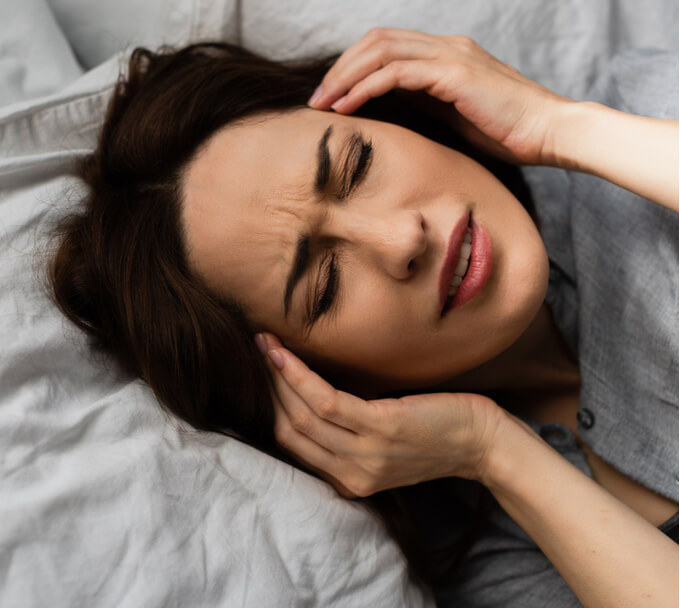
A New Approach to Headaches in Santa Barbara, CA
An approach that provides relief in 93% of patients
For too long, headache and migraine pain has been treated as a medical issue, with attempts to address the physiology rather than the anatomy of the painful symptoms.
Neurologists often think about headaches in terms of physiology, where headache pains are caused by chemical imbalances, reactions inside the brain and pain signals between cells inside the brain. This approach uses medication to block these chemical reactions as the primary treatment for headaches. Sometimes, medications do work.
However, patients vary vastly in their symptoms and reactions to treatment, and some medications work better than others. Neurologists and headache patients alike have learned that there are no medications that work consistently in all patients. For example, commercials for one of the newest migraine medications (a CGRP inhibitor) claim to prevent up to 50% of migraine pain when doses are repeated. While this medication attempts to block some of the chemicals that transmit pain associated with migraines, it’s not entirely useful for all migraine pains.
New research centered around the anatomy of migraine pain has further revealed the causes for these chemical imbalances. In many cases, the causes of migraine headaches lie primarily outside the brain – mainly in the peripheral nerves of the head and neck. Irritated and compressed nerves that lie in the neck muscles or just under the skin of the forehead seem to be what triggers the cycle of pain in the brain.
Fortunately, these nerves can be easily accessed using minimally invasive outpatient decompression procedures. Nerve decompression allows these nerves to lie in a much more relaxed state, no longer triggering pain in the brain.

A Small Procedure Outside of the Brain With a Huge Impact on Pain Inside of the Brain
Many neurologists state that genetics are a significant contributor to pain and migraine symptoms. This provides a piece of solid evidence that migraines come from anatomy and that they can be successfully resolved using nerve decompression surgery. The anatomy and structures of the body are genetically inherited from our parents. Unfortunately, if one or both parents has tight bands of tissue pushing on a nerve in their forehead or neck, it may be passed down genetically to their child. This clear understanding of how migraines can be genetically related to anatomy proves that a patient’s condition can be improved by the surgical release of the compressing tissue on the problematic nerve.

A diagnostic procedure called Targeted Injection Mapping (TIM) helps Dr. Lowenstein identify which nerves are irritated and inflamed. During the procedure, Dr. Lowenstein injects local anesthetic at various points to block individual nerves that may be involved in triggering migraines. This allows him to create a map of the distress signals the brain is receiving and formulate an appropriate plan to address them.
The basis of migraine nerve decompression surgery is to release the nerves in the neck and the forehead from nearby tissue that’s pushing on the nerve. Releasing these nerves surgically from those irritating structures prevents these signals from causing headache pain after surgery.
In contrast to even the latest migraine medication, nerve decompression is a quick and easy outpatient procedure with significantly better outcomes. There is a stark difference between medication and decompression, and the differences in expected results are remarkable.
Nerve Decompression Vs. Medication
A Picture Is Worth a Thousand Words… and Maybe Years of Pain Relief
Our website contains several photos taken by Dr. Lowenstein to illustrate the anatomic source of migraine pain. Please be aware that these intra-operative photographs taken during surgical procedures tend to be slightly graphic. If you are seeking a solution to your migraine headaches, we encourage you to discuss with us the factors that could be causing your migraine pains and the option of alleviating your symptoms through nerve decompression.
Our website contains many resources for patients who want to understand more about migraines and their treatment. We also encourage visitors to view our testimonials from patients who have had successful surgery with us.
If you have questions about TIM or migraine surgery, or would like to schedule a consultation with Dr. Lowenstein, please contact us or call us at 805-969-9004.
